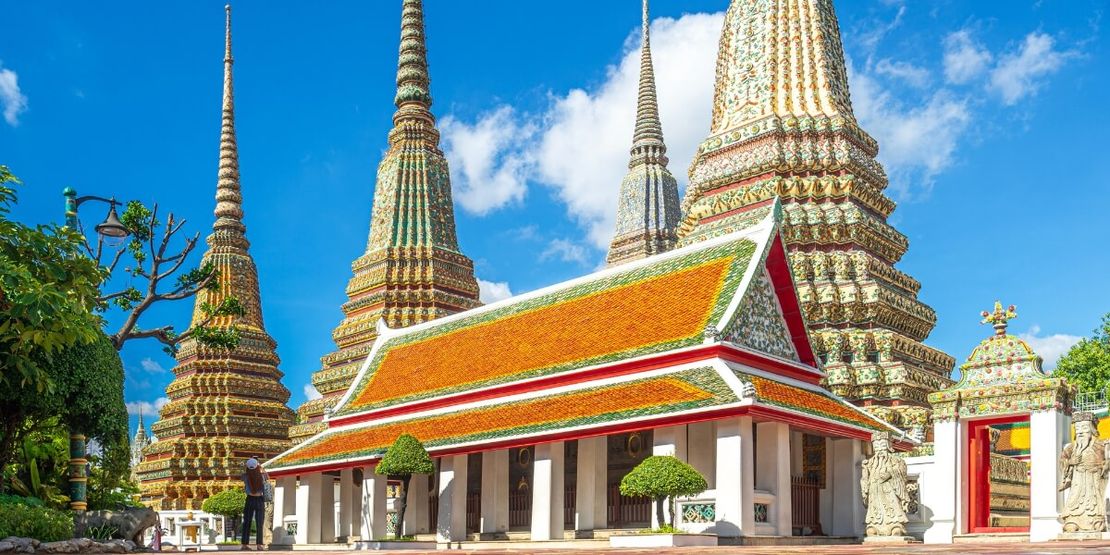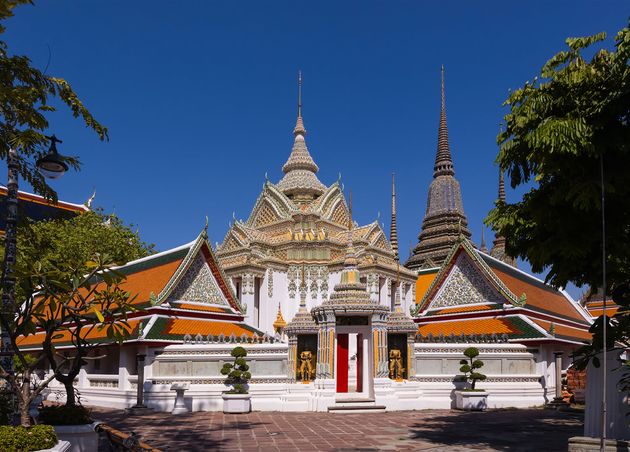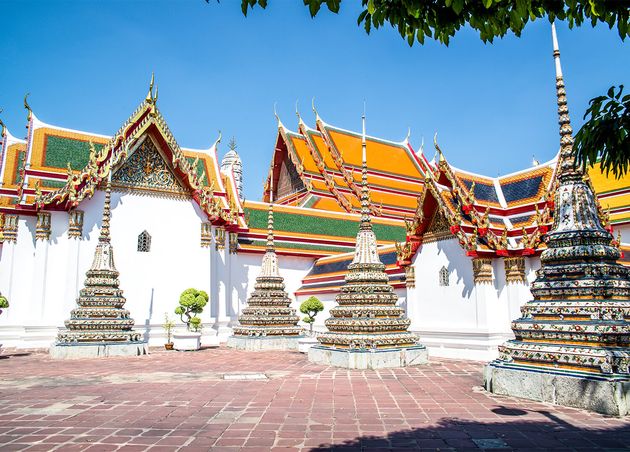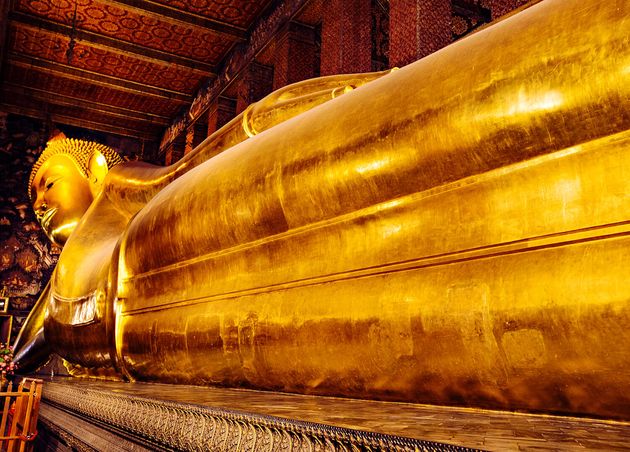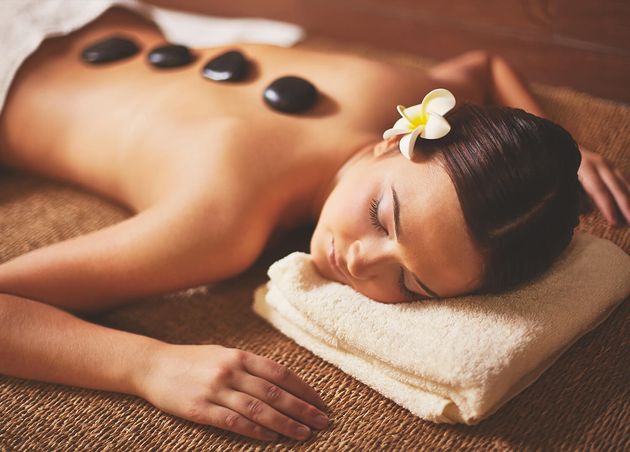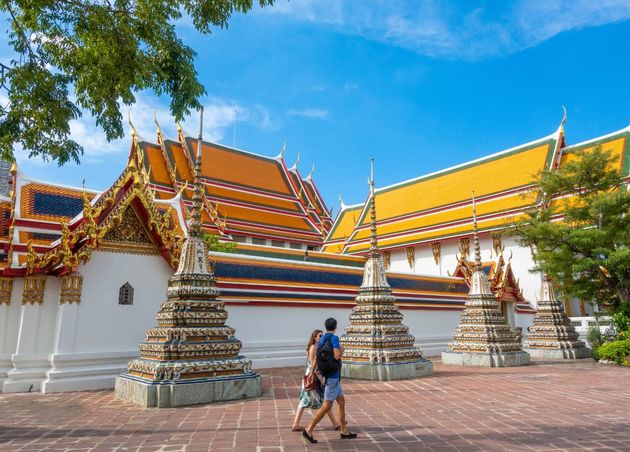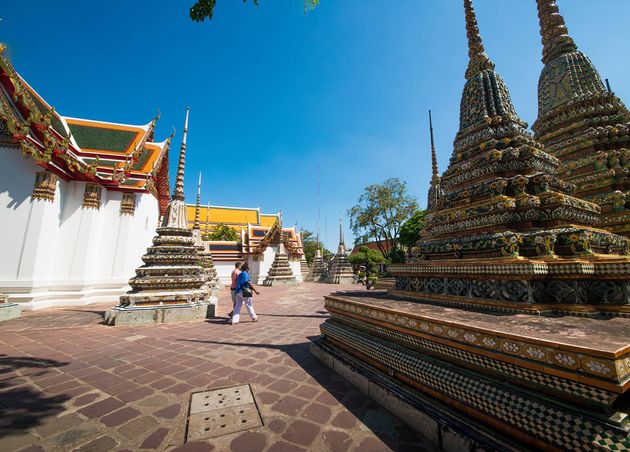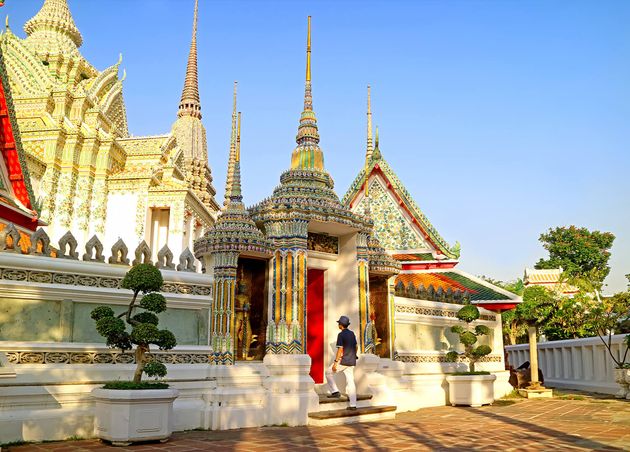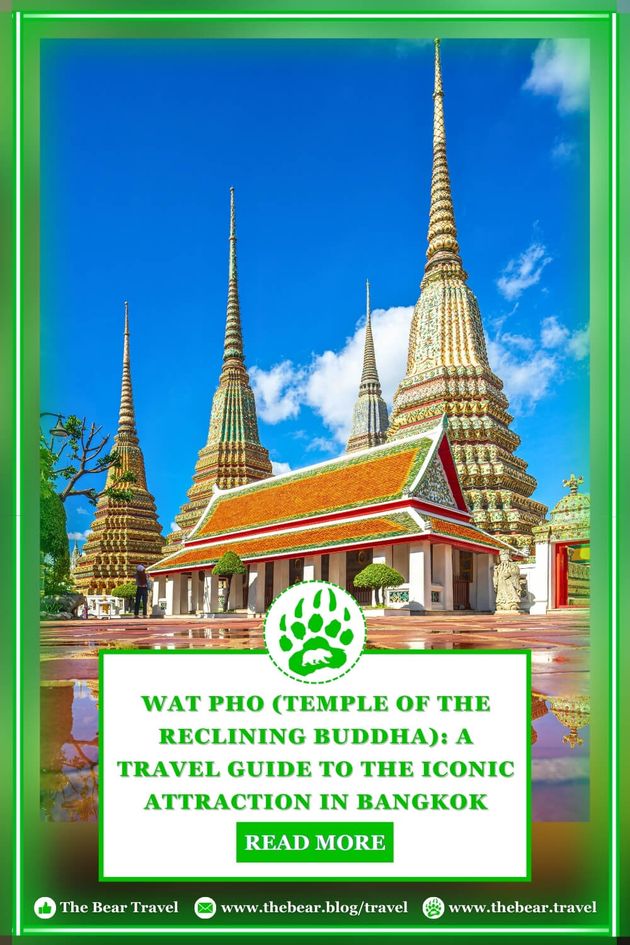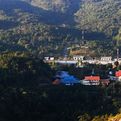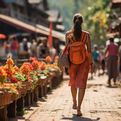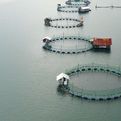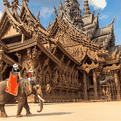Wat Pho (Temple of the Reclining Buddha): A Travel Guide to the Iconic Attraction in Bangkok
If you are planning your next Thailand trip, especially to Krung Thep Maha Nakhon (Bangkok), our guide to Wat Pho (วัดโพธิ์ ท่าเตียน, Temple of the Reclining Buddha) will be your best lead to explore its beauty and culture.
Known officially as Wat Phra Chetuphon Wimon Mangkhalaram Rajwaramahawihan (วัดพระเชตุพนวิมลมังคลารามราชวรมหาวิหาร) and as the birthplace of traditional Thai massage, Wat Pho is most famous for being one of Bangkok's most revered and historically rich temples, especially, for its massive reclining Buddha statue and intricate murals.
This iconic temple complex is easy for anyone in the city capital to visit. It is near the Bangkok Flower Market and can be reached on foot. Wat Pho is renowned as an essential stop during any Bangkok itinerary, with its unique blend of spiritual serenity, architectural splendor, and cultural heritage dating back to the 16th century.
Our comprehensive travel guide to Wat Pho will include all you need to know about this amazing temple, including its details, history, main attractions, and how to visit. So, what are you waiting for? Continue reading to learn more.
With an area of around 20 acres, Wat Pho is among Bangkok's largest and oldest temples, having been built about 200 years before.
A Brief History of Wat Pho
The Wat Pho temple is older than Bangkok. It dates back to the 17th century during the Ayutthaya period. Later, King Rama I enlarged the temple, and the name Wat Potaram was changed to Wat Pho in the 18th century.
King Rama III also improved the temple to establish the first public university for medicine and traditional Thai massage in Thailand. However, Wat Pho is a testament to Thailand's royal patronage of Buddhism and a symbol of Thailand's traditional values now.
Beautiful Attractions Inside Wat Pho in Bangkok
Reclining Buddha
Reclining Buddha is the major attraction in Wat Pho, around 46 meters long and 15 meters high. You can see this giant statue in the compound’s main sanctuary, which shows the passing of the Lord Buddha to nirvana. Most importantly, here, you will meet a bowl to drop coins to gain good luck, and you can buy 108 coins for 20 Thai Baht.
Phra Ubosot
Phra Ubosot is the ordination hall that was built during the reign of Rama I and stands today as a result of extensive renovations completed by the reign of Rama III. If you visit inside the hall, you can see many impressive murals and a three-tiered pedestal that supports the Phra Buddha Deva Patimakorn. It is the second-most noteworthy Buddha statue in the compound.
Buddha Statues
You should visit the images on display in the surroundings of Phra Ubosot. The Phra Chinnarat and Phra Chinnasri Buddhas in the western and southern chapels are just among the most beautiful statues rescued from Sukhothai by relatives of Rama I.
Ancient Inscriptions
In the encircling Phra Ubosot, there is a low marble wall with 152 bas-reliefs showcasing scenes from the Thai version of the Ramayana. Close to that, you will see a little pavilion to the west of Phra Ubosot, which contains Unesco-awarded inscriptions detailing the tenets of traditional Thai massage.
Royal Chedi
A collection of stupas is on the western side of the ground to commemorate the first four Chakri kings. As a sign of the Ratanakosin style, the chedi has a square bell shape with distinct corners, and the titles use the colors of the Buddhist flag.
Phra Mondop
Serving as a depository for Buddhist scriptures, you can see the Phra Mondop. It is guarded by four yaksha or guardian demons, and you can visit the currently reptile-free Crocodile Pond south of the Phra Mondop.
Sala Kan Parian
Sala Kan Parian is the ancient primary bòht of the temple, which held the temple compound's primary Buddha statue. You have to visit the southwestern corner of the compound to see it, and it is worth seeing because it is one of the few remaining structures that predate Rama III's expansion of Wat Pho Tharam.
Granite Statues and Murals
Wat Pho has dozens of giants and figurines carved from granite. They guard the gates, and detailed murals display Thai literature and folklore scenes.
Wat Pho has Thailand's largest reclining Buddha image and Thailand’s largest number of Buddha images.
Experience the Traditional Thai Massage
The School of Thai Medicine in Wat Pho is known as the first university in Thailand. It was established in 1955 CE as the first school of Thai medicine. It has four main courses, including Thai pharmacy, Thai medical practice, Thai midwifery, and Thai massage.
So, if you want to relax your body through a traditional Thai massage, you need 500 Thai Baht. Although it costs more than outside, you will gain the best results from an original Thai massage with accurate techniques.
How to Visit Wat Pho in Bangkok?
Wat Pho is located in Bangkok’s Rattanakosin Island. It is directly south of the Grand Palace, and you can select the most appropriate travel option based on your convenience.
- Chao Phraya River Boat
- Taxi or Tuk-Tuk
- Public Transportation
- Private Transportation
Essential Information Before Visiting Wat Pho
Wat Pho is one of the best tourist destinations in Bangkok, attracting thousands of tourists daily. It is also a pure Buddhist temple where the Buddhists respect and practice their religion. So, everyone who visits the temple should understand some essential information and follow cultural etiquette and practices.
#1 Dress Code
Generally, when visiting a temple in Thailand, you should dress appropriately. Similarly, you shouldn’t dress to expose above your knees and shoulders. If we explain it further, women should know the following information:
- Avoid tank tops.
- Avoid bum shorts.
- Wear either skirts or pants that cover the knees.
- Only short-sleeve or long-sleeve tops are allowed.
No one can wear dresses that expose their bodies. Long trousers and short-sleeve or long-sleeve shirts are the perfect dress code for men.
#2 Remove Your Footwear
Before entering the temple, remove your footwear and put it into the plastic bag the temple will give you.
#3 Opening and Closing Hours
The Wat Pho is open every day from 8:00 in the morning to around 7:30 in the evening.
#4 Entrance fee
The entrance fee to Wat Pho is 300 Thai Baht for each person. Admission is free for children under 120 cm.
#5 Best Time to Visit
The best times to visit the temple are early in the morning and late in the afternoon because you can avoid the crowds and heat.
#6 Having Good Luck
People believe that offering coins to the Reclining Buddha will bring you luck. So, you can purchase coins and offer them to the 108 bowls lined along the walls of the building.
#7 Photos
There are no restrictions on taking photographs in the Wat Pho. However, you must be responsible and respect the temple while taking photographs.
#8 Facilities
Wat Pho has clean restrooms, a souvenir shop, and several shaded areas for resting if you need to.
Main Reasons Why You Should Visit Wat Pho
Wat Pho has become a major tourist attraction in Bangkok today. The main reasons to highlight this valuable temple complex are as follows:
- It is worth seeing the well-designed murals on the walkways of Wat Pho.
- You can see some Chinese statues used in past ships in the courtyard.
- Most Buddhists visit to see and worship the Bodhi tree in the courtyard.
- To get a pretty good traditional Thai massage for a reasonable price.
- Wat Pho is renowned for having 4 chapels with the most gilded Buddha images of around 394.
Concluding Your Visit: Wat Pho Highlights
As you wrap up your visit to Wat Pho, reflect on the remarkable highlights that make this temple a must-see in Bangkok. The awe-inspiring Reclining Buddha, stretching 46 meters in length, is a breathtaking centerpiece that captures Thai culture's spiritual and artistic essence.
📍Pin it!
Stroll through the serene courtyards and marvel at the intricate murals and statues that adorn the temple grounds. Don’t forget to explore the traditional Thai massage school, where you can experience an authentic and relaxing treatment. Wat Pho’s rich history and cultural significance provide a memorable conclusion to your journey through Thailand’s spiritual heritage.
Dr. Theodore (Professor Bear)
Hi! I'm Dr. Theodore Bennet (Professor Bear), your scholarly travel companion who brings history to life with immersive tours and expert guides. With a Ph.D. in History and years of travel writing experience, I offer authoritative insights for unforgettable journeys.
The Bear Travel | Experience like a Local
A fast-growing Thailand Travel Blog written by Expats and Thais since 2017. We will share our experiences and ideas from an insider point of view for you to create your own unique Thailand experience.
For the latest news and events about The Bear Travel, follow us on Facebook, Instagram, Twitter, Pinterest, or YouTube.
For any issues, concerns, or queries, don’t hesitate to CONTACT us.
Recommended for you
Travel to Phuket: A Hopping Day Trip Itinerary to its Stunning Islands
Sydney, The Bear Traveler (The Bear Travel)
Taiyuan Museum of Art: A Cultural Hub in Chiang Rai
The Bear Team
Shrimp Farming Expenses: Strategies for Cost Reduction and Sustainability
Riley Sinclair (Digital Aqua Bear)
Top 10 Best Places to Stay During Your Pattaya Holiday
Rowan (Guinness Bear)
Travel to Chiang Dao Guide: Everything You Need to Know
The Bear Team


